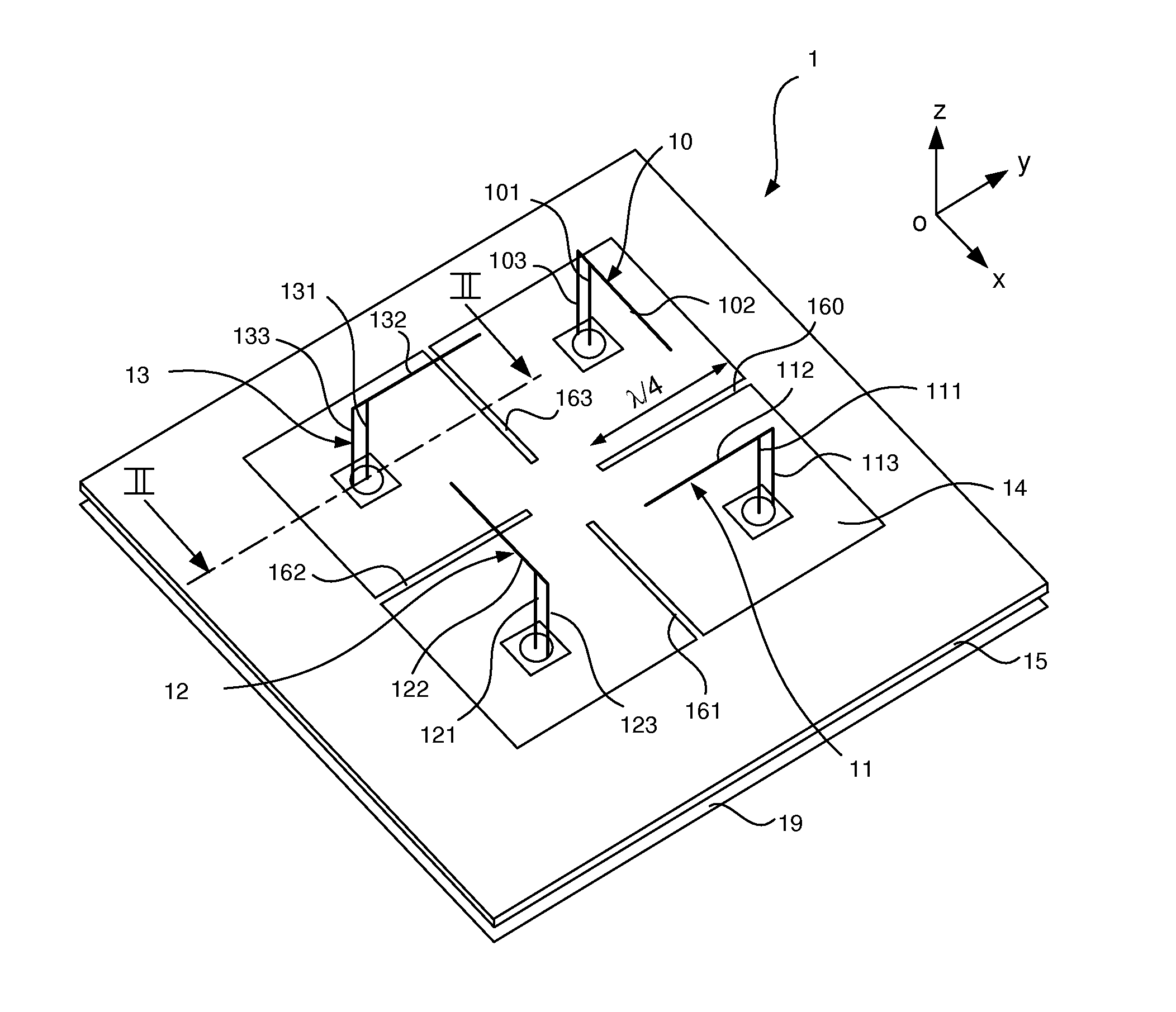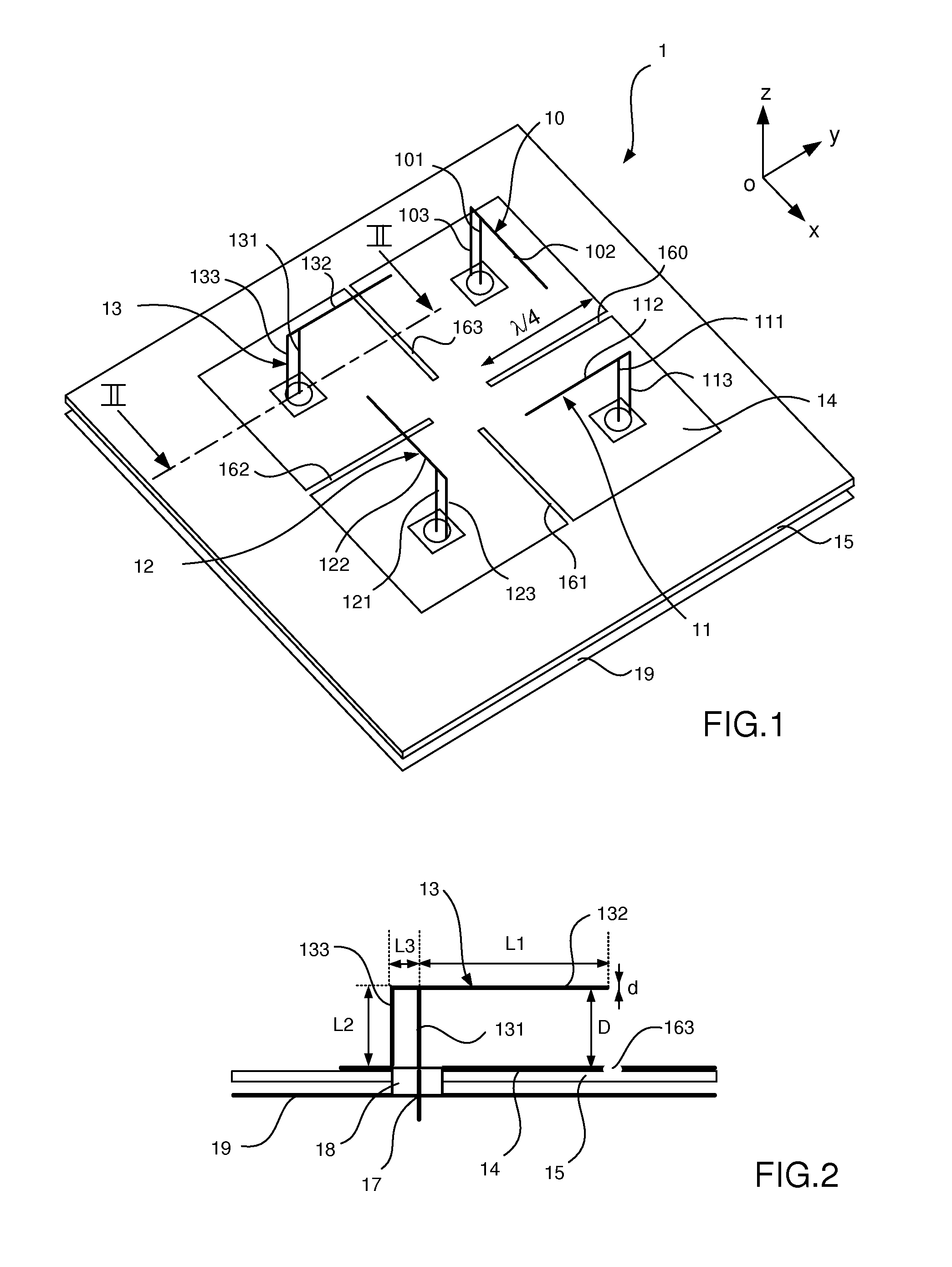UHF RFID Reader with Improved Antenna System
a technology of rfid reader and antenna system, which is applied in the direction of subscriber station connection selection arrangement, indirect connection of subscriber station, sensing record carrier, etc., can solve the problem of inability to identify tags by rfid reader, inability to modulate backscattered signals, and increased tag identification rate, etc. problem, to achieve the effect of improving quality
- Summary
- Abstract
- Description
- Claims
- Application Information
AI Technical Summary
Benefits of technology
Problems solved by technology
Method used
Image
Examples
Embodiment Construction
[0026]The exemplification set out herein illustrates a preferred embodiment of the invention, and such exemplification is not to be construed as limiting the scope of the invention in any manner.
[0027]In the present specification, it is described an antenna system for RFID readers comprising 4 inverted F antennas (or IFAs) produced on a printed circuit board with a ground plane formed thereon, said IFAs being offset by a sequential rotation of 90°. This preferred embodiment is illustrated by FIGS. 1 and 2. FIG. 1 depicts the layout of this embodiment and FIG. 2 is a partial cross-section view of the antenna system of FIG. 1.
[0028]In reference to FIGS. 1 and 2, the antenna system 1 comprises 4 inverted F antennas (IFAs) 10, 11, 12 and 13 produced on a printed circuit board. Each IFA comprises a ground plane, a radiating element, a feed element and a shorting or tuning element. The ground plane, referenced 14, is formed on a substrate 15 of the printed circuit board. The ground plane ...
PUM
 Login to View More
Login to View More Abstract
Description
Claims
Application Information
 Login to View More
Login to View More - R&D
- Intellectual Property
- Life Sciences
- Materials
- Tech Scout
- Unparalleled Data Quality
- Higher Quality Content
- 60% Fewer Hallucinations
Browse by: Latest US Patents, China's latest patents, Technical Efficacy Thesaurus, Application Domain, Technology Topic, Popular Technical Reports.
© 2025 PatSnap. All rights reserved.Legal|Privacy policy|Modern Slavery Act Transparency Statement|Sitemap|About US| Contact US: help@patsnap.com



